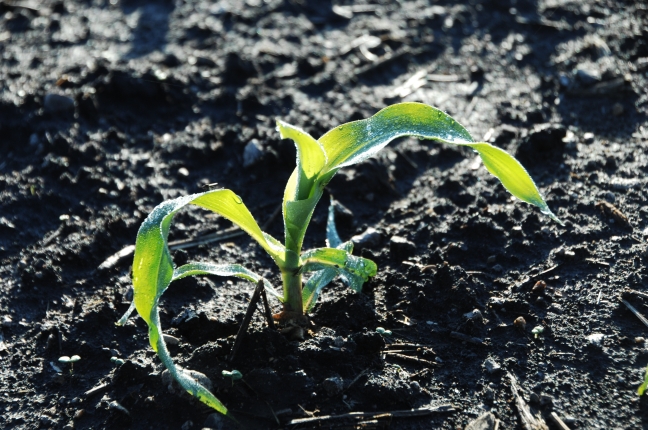
Iowa State University agricultural experts are available to comment on the spring planting season, which is expected to kick into high gear this week. Photo courtesy of ISU College of Agriculture and Life Sciences. Larger image.
AMES, Iowa – Corn and soybean planting should kick into high gear this week, as Iowa farmers take advantage of generally favorable weather conditions to get a good start to the growing season. Well-timed rains will be key for profit margins, which are expected to be tighter than the last two years.
Iowa State University experts are available for media interviews about spring planting. Here’s what two of them had to say about field and market conditions:
Mark Licht, associate professor of agronomy and extension cropping systems specialist
For ideal yields, the best time for planting in Iowa is April 15-May 20, but soil temperatures and moisture levels are even better indicators than a calendar. Soil is ready for planting when it is above 50 degrees and trending warmer, Licht said.
“That guarantees we get good germination and timely emergence,” he said. “We don’t want seed sitting in the ground for four weeks before it emerges.”
Getting crops to sprout from the soil as soon as possible reduces risk of disease and cold-related injury, he said.
With soil temperatures in the mid-50s and even into the 60s in parts of Iowa last week, farmers are likely to start planting in full force this week. Much of the field work in recent weeks has been preparation, such as herbicide and fertilizer application, Licht said.
“There are pockets where a little planting was done early, but there has still been a lot of hesitation,” he said.
The forecasted brief return to overnight temperatures in the low 30s last weekend may have caused some of the wait-and-see attitude. Farmers in drier areas, such as northwest Iowa where drought conditions remain, may be looking for additional rain before planting, Licht said. Much of central and north central Iowa also is abnormally dry, as are subsoils across the state. Timely rains will be especially important this year.
“A lot of farmers are saying it’s drier than they expected we’d be, considering how much snow melt we’ve had,” Licht said. “Fields are much drier than we’d normally want to be.”
Chad Hart, professor of economics and extension grain markets specialist

Chad Hart
When crops are planted tends to affect prices, Hart said. If there are few delays, harvests are larger and prices inch down. Delays severe and widespread enough to impact yields can push prices higher.
Iowa corn is typically about half in the ground by early May, with soybeans a couple weeks behind. While farmers here are poised to be on track so far, a snow-heavy and lingering winter in Minnesota and the Dakotas is expected to push back planting to the north, he said.
The market outlook for 2023 isn’t as rosy as the prior two years, which saw elevated prices for both corn and soybeans, Hart said. Falling exports are a big factor, driven in part by less uncertainty in the Black Sea region. Though the war in the Ukraine continues and grain production hasn’t fully rebounded, it has resumed enough to account for some exports.
Another factor baked into lower price forecasts is expanded production, Hart said. The U.S. Department of Agriculture’s annual spring survey projects a 3.4 million acre increase in corn fields and a small uptick in soybean acreage.
“The profit expectation is much smaller than it has been over the last two years,” he said. “The big question is just how far prices retreat.”
